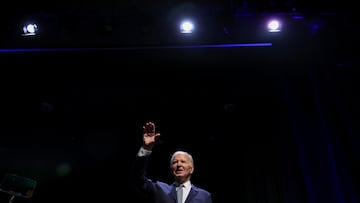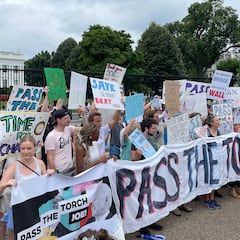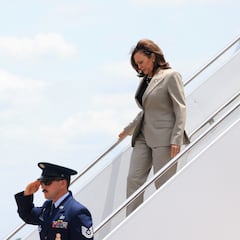What is the process now for the Democratic Party to choose a replacement for Joe Biden?
Biden has bowed out of the 2024 presidential race. While he has anointed his VP Kamala Harris as his successor, the Democrat Party must still have its say.

Delegates at the Democratic National Convention in Chicago will be choosing their party’s presidential nominee for the 2024 general elections in November are no longer bound by the results of the primaries. Despite being adamant that he would stay in the campaign, President Joe Biden has passed on the baton after being unable to quiet the voices urging him to step aside.
The once presumptive nominee with over 99% of pledged delegates has called on them to nominate his loyal Number Two, Vice President Kamala Harris, for the top of the ticket.
My fellow Democrats, I have decided not to accept the nomination and to focus all my energies on my duties as President for the remainder of my term. My very first decision as the party nominee in 2020 was to pick Kamala Harris as my Vice President. And it’s been the best… pic.twitter.com/x8DnvuImJV
— Joe Biden (@JoeBiden) July 21, 2024
“Today I want to offer my full support and endorsement for Kamala to be the nominee of our party this year,” the president tweeted. “Democrats — it’s time to come together and beat Trump. Let’s do this.”
However, it isn’t guaranteed that they will all fall in line as the DNC rules allow delegates to “in all good conscience reflect the sentiments of those who elected them,” which could lead to a ‘contested’ convention.
What is the process now for the Democratic Party to choose a replacement for Joe Biden?
Under 2024 DNC rules, a request to nominate a presidential candidate must be made in writing with the written approval of the proposed nominee that has to be a registered Democrat. At least 300 delegates and no more than 600 delegates must sign on to the request and not more than 50 can come from one state’s delegation. That must be submitted to the Convention Secretary no later than 6:oo pm the day before the commencement of the presidential nominations.
Each presidential candidate will be given 20 minutes uninterrupted from the recognition of the nominator for the presentation of their name by the nominating and seconding speeches. Once the nominations have closed, the roll call for voting will proceed.
Only the 3,933 pledged delegates can vote on the first ballot of the presidential roll call. If no candidate wins a majority of the pledged delegates in the first round of voting all of them will become ‘unbound’. This means that they can vote for anyone that they want, even if that person wasn’t nominated.
Additionally, the other 739 automatic candidates, or ‘Superdelegates’, will be allowed to vote in the second and any subsequent ballot rounds in what would then be known as a ‘brokered’ convention. Voting will continue until one candidate receives a majority.
Nomination of the vice presidential candidate will proceed in the same manner as the presidential nomination process. The one distinction is that the request to nominate a vice presidential candidate must be submitted by 9:00 am the day before the nomination process for vice presidential candidates commences.
Related stories
The longest the Democrats have ever taken to choose a presidential nominee was in 1924. It took 16 days and 103 votes according to History.com. At that time the party required a candidate to secure a two-thirds majority instead of a simple majority which is the case nowadays.
The last time the Democrats had a brokered convention was in 1952. That same year was the last time that Republicans found themselves in the same situation as well.



Complete your personal details to comment